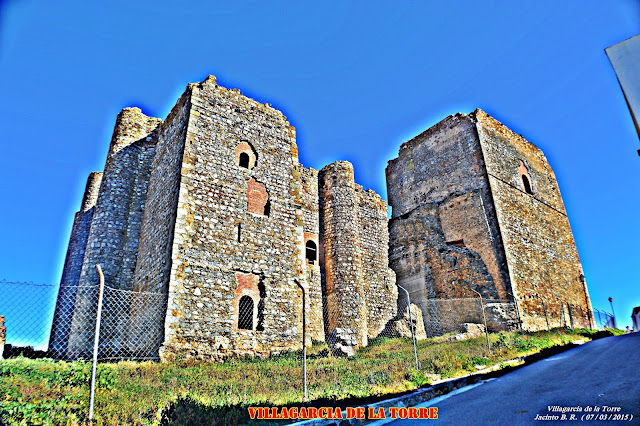Una recopilación de mis recorridos por Extremadura, sierra de Aracena, Picos de Aroche y raya de Portugal.
Archivo del blog
domingo, 27 de diciembre de 2015
CAPILLA / VILLA CHAPEL / VILLA KAPELLE / VILLA CHAPELLE
 |
Capilla se sitúa en el borde oriental de la Baja Extremadura, limítrofe con las tierras de Ciudad Real y Córdoba, sobre un terreno accidentado, en el eje de los itinerarios que conducen a Chillón y Almadén, hallándose en una encrucijada de caminos e influencias culturales en que también participa el foco toledano.
También se encuentra en el límite de las comarcas de La Siberia y La Serena, presentando características que podrían justificar su inclusión en cualquiera de estas dos comarcas. En todo caso, su localización en la orilla izquierda del río Zújar, sobre la vertiente sur de la sierra del Torozo, la sitúa en La Serena
Foco de asentamientos humanos desde la más remota antigüedad, como testimonian las abundantes pinturas rupestres de la zona, y punto de fijación después, de la Miróbriga Turdulorum céltica. Bajo el dominio romano continuó siendo un centro poblado de notable importancia: "insigne municipio", lo denomina Plinio. Y también durante época árabe, siempre como enclave estratégico destacado en el eje de las comunicaciones entre Mérida, Sevilla, Córdoba, Almadén y Toledo. Por tal razón, sobre sus escarpaduras existieron en todos los tiempos sólidas fortificaciones.
Un puente medieval llamado de Garbayuela, de origen quizá romano, con ocho arcos, hoy muy maltrecho, fundamental en la red de itinerarios de la Mesta, se sitúa en sus proximidades en dirección a Peñalsordo, evidenciando la importancia del lugar como nudo de comunicaciones.
Capilla fue conquistada en 1226 por el reino de Castilla, si bien volvió a caer en manos musulmanas hasta que definitivamente fue tomada por las tropas cristianas, siendo entregado el lugar a la Orden del Temple. Al extinguirse la misma, en 1309 pasó a formar parte de las propiedades del Maestre de Alcántara, don Gonzalo Pérez.
En 1382 pasó a la Casa de Béjar, al ser comprada por el camarero mayor del rey, don Diego López de Stúñiga, por 280.000 maravedís. En los primeros años del siglo XVI pasó a formar parte del patrimonio de uno de sus descendientes pues, según Sánchez Loro, en el testamento de don Álvaro de Zúñiga se le otroga Capilla y Burguillos. A fines del siglo XVIII pasó al Ducado de Osuna
En el aspecto jurisdiccional, desde la Reconquista fue capital del Estado de su nombre, en el cual se incluían las poblaciones de Garlitos, Baterno, Peñalsordo y Zarza Capilla. En 15941 la Tierra de Capilla figura en laProvincia de Trujillo.
|
 |
Chapel is situated on the eastern edge of Lower Extremadura, bordering the lands of Ciudad Real and Cordoba, over rough terrain, the hub of the routes leading to Almaden and Chillon, being at a crossroads and cultural influences in which also involved the Toledo focus.
Also it located on the edge of the regions of Siberia and La Serena, presenting characteristics that could justify its inclusion in either of these two regions. In any case, its location on the left bank of the river Zújar, on the southern slope Torozo saw the stands at La Serena
Focus human settlements since ancient times, as witnessed by the numerous rock paintings in the area, and after fixing point, the Celtic Miróbriga Turdulorum. Under Roman rule remained a town of considerable importance center "famous town", calls Pliny. And also during Arab time, as long as outstanding strategic location at the center of communications between Merida, Seville, Cordoba and Toledo Almaden. For this reason, on its escarpment they existed at all times fortifications solid.
A medieval bridge called Garbayuela, of perhaps Roman origin, with eight arches, now very battered, key in the network of routes of the Mesta, is situated in the vicinity towards Peñalsordo, demonstrating the importance of place as communications hub.
In 1382 it became the Casa de Bejar, to be purchased by the highest servant of the king, Don Diego López de Stúñiga for 280,000 maravedis. In the early sixteenth century it became part of the heritage of one of his descendants because, according to Sánchez Loro, in the will of Don Alvaro de Zuniga was otroga Chapel and Burguillos. In the late eighteenth century it passed to the Duchy of OsunaChapel was conquered in 1226 by the kingdom of Castile, but fell back into Muslim hands until finally was taken by Christian troops, the place being given to the Knights Templar. Upon termination of the same, in 1309 it became part of the properties of the Master of Alcantara Don Gonzalo Perez.
In the jurisdictional aspect, since the Reconquista was the capital of the state of his name, which stocks Garlitos, Baterno, and Bush Chapel Peñalsordo they included. 15941 Land in Chapel figure in the Province of Trujillo.
Suscribirse a:
Comentarios (Atom)



































































